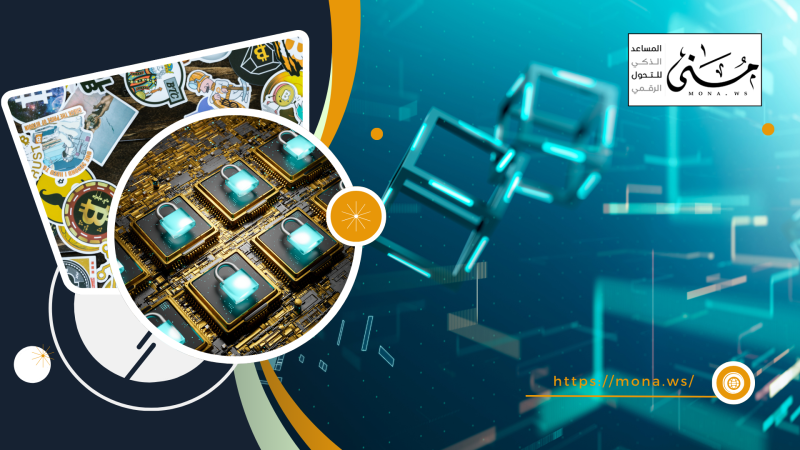Administrative and organizational structures are the backbone of any successful organization, as they clearly define how roles and responsibilities are distributed within the organization, which contributes to achieving goals with high efficiency.
This article aims to review the most prominent smart solutions that help institutions improve administrative and organizational structures, through innovative tools and effective strategies that keep pace with the requirements of the modern era.
The concept of administrative structures and organizational structures
Administrative structures refer to the framework that defines the administrative levels within an organization, and focuses on the distribution of authority and responsibilities among the different administrative levels.
Management structures explain how decisions are made, supervised, and coordinated between different departments within an organization. Management structures include levels such as top management, middle management, and executive management, and aim to achieve operational efficiency and clarity in administrative tasks.
The organizational structure is the general design that defines the relationships between jobs and departments within the organization. This structure includes the distribution of tasks, the definition of communication channels, and the relationships between different departments, which helps in achieving institutional goals effectively. The organizational structure can be functional, sectoral, network, or matrix, and its design depends on the nature of the work and the size of the organization.
Comparison between administrative structures and organizational structure
You can check this table for more information:
|
The element |
Administrative structures |
Organizational structure |
|
The concept |
It defines the administrative levels within the organization and how authority and responsibilities are distributed. |
It defines how the functions and relationships between different departments within an organization are organized. |
|
the goal |
Improve decision-making, and ensure efficient supervision and management. |
Organizing the workflow within the organization and enhancing coordination between departments. |
|
the focus |
Focuses on management levels (senior, middle, executive). |
Focuses on the distribution of functions and organizational relationships between departments. |
|
Design |
It is based on an administrative pyramid that shows lines of authority and responsibilities. |
It may be functional, sectoral, networked, or matrixed, depending on the nature of the organization. |
|
Employee Relationship |
It clarifies the chain of command and supervision within the organization. |
It shows how tasks are distributed and communication is between different departments. |
|
Flexibility |
Less flexible, as it relies on fixed management levels. |
More flexible, as sections and tasks can be modified according to the needs of the organization. |
|
The importance of technology |
It can be improved by using electronic management systems. |
It relies heavily on management information systems and modern technologies to organize work. |
Administrative structures are concerned with the distribution of authority and supervision within an organization, while organizational structure focuses on designing relationships between jobs and departments. Both are necessary to ensure work efficiency and achieve organizational goals. When combined in an integrated manner, organizations can achieve effective administrative organization and high productivity.
The importance of developing administrative and organizational structures
Effective management plays a fundamental role in achieving institutional success, as functional and organizational performance is directly linked to the quality of the administrative structures followed. When the organizational structure is flexible and advanced, it becomes easier to achieve coordination between different departments, reduce bureaucratic complexities, and improve the decision-making process.
In the past, administrative structures relied on traditional systems that limited creativity and hindered the smooth flow of information, but with digital transformation, these structures can be improved through smart solutions, such as electronic systems for managing operations and communications, which allows for a more flexible and streamlined work environment.
Statistics and figures about smart management
Recent studies indicate that companies that adopt smart management solutions achieve up to 30% higher performance compared to companies that rely on traditional methods, and organizations that rely on automating administrative processes reduce operating costs by 25% to 40%.
In addition, a study conducted by the Foundation found thatGartner says that 70% of global companies are currently moving towards digital transformation in their organizational management, which reflects the importance of smart solutions in enhancing operational efficiency. These figures confirm that administrative development is not just an option, but has become a strategic necessity that ensures the sustainability of institutions in light of increasing competition.
The most important smart solutions to improve administrative and organizational structures
There are many smart solutions that can be relied upon to improve administrative and organizational structures, including:
- Adoption of integrated electronic systems
One of the most effective solutions for improving administrative structures is the use of document management and administrative communications systems that facilitate the flow of information within the organization. Among the most prominent of these systems, we find advanced solutions such as:DocSuite, an intelligent system that enables companies to manage documents, automate processes, and organize administrative communications in a smooth and secure way.
These systems contribute to reducing reliance on paper, accelerating the decision-making process, and improving coordination between different teams within the organization, which leads to increasing performance efficiency and reducing errors resulting from manual processes.
- Application of artificial intelligence and data analysis techniques
Artificial intelligence enables organizations to analyze the vast amounts of data they have, helping them make informed decisions.
These technologies can also provide smart solutions for the effective distribution of human resources, so that the right competencies are employed in the locations that need their skills, which improves administrative structures and reduces waste of time and effort.
- Promote flexible and decentralized management
With the rapid development of the work environment, it has become necessary to move from traditional centralized management to decentralized management, which gives employees more space to make decisions and provide creative solutions.
Smart solutions help support this transformation through performance management and collaborative project systems, which allow teams to work remotely and communicate effectively through unified electronic platforms.
- Automate administrative processes to improve efficiency
One of the biggest challenges facing organizations is bureaucracy and delays in administrative transactions, which negatively affects performance efficiency. This problem can be solved by automating administrative processes using modern programs based on automated process robots (RPA), which automates repetitive tasks, such as processing invoices, generating reports, and scheduling meetings.
This solution significantly reduces the time required to complete tasks, improves the accuracy of operations, and significantly improves administrative structures.
- Adopting a culture of digital transformation and continuous training
Even with the latest technologies available, there will be no positive impact if employees do not have the skills to use them effectively, therefore, it is necessary for organizations to adopt continuous training programs to raise the efficiency of human cadres in dealing with smart administrative tools.
This can be achieved through digital workshops, online courses, and interactive applications that help employees gain new skills in digital management and data analysis.
Challenges of implementing smart solutions and how to overcome them
Despite the many benefits of smart solutions, their implementation faces some challenges, such as resistance to change, the cost of digital transformation, and the need to secure data. To overcome these challenges, organizations must follow clear strategies, including:
- Raising awareness of the importance of digital transformation by explaining the direct benefits that will accrue to employees and management.
- Gradually adopt smart technologies rather than implementing them all at once, making the adaptation process easier.
- Enhancing cybersecurity through advanced systems that protect administrative information from breaches.
In the context of the accelerating digital revolution, organizations are expected to continue to rely on artificial intelligence, big data, and the Internet of Things to improve their administrative structures. Reliance on integrated business management systems will also become more widespread, given the flexibility, efficiency, and security they provide in organizing administrative operations.
Improving administrative and organizational structures using smart solutions is an inevitable step to keep pace with the developments of the era and achieve competitive superiority. Institutions that invest in these solutions will be able to achieve operational efficiency, enhance performance, reduce costs, and achieve an integrated administrative vision that meets the requirements of the future.
What are the types of structures?
There are many types of administrative and organizational structures adopted by companies, including:
Functional structure: In which work is divided according to specializations, such as marketing, accounting, and production.
Sectoral structure: The organization is divided based on products, services, or markets.
matrix structure: Combines functional and sectoral structure, with employees working in multidisciplinary teams.
Network structure: It relies on virtual relationships and collaboration between teams rather than traditional hierarchy.
Criteria for designing effective administrative and organizational structures
Many people are looking for standards that help in designing effective administrative and organizational structures, including:
ClarityEach employee should have a defined role and clear responsibilities.
Flexibility: Ability to adapt to changes in the work environment.
Efficiency: Improve productivity by reducing administrative complexity.
Ease of communication: Enhancing communication between departments and employees.
Alignment with company strategyThe structure should serve the long-term goals of the organization.
How to Restructure Organizations to Improve Performance
Restructuring institutions is one of the most important administrative processes that aim to improve performance, enhance operational efficiency, and achieve sustainability in light of the changing business environment. Institutions can be restructured to improve performance through:
First: Analyze the current situation and set goals
Before embarking on restructuring the administrative and organizational structures, the current performance of the organization must be analyzed, and the strengths, weaknesses, opportunities, and challenges facing it must be identified.
This is done by reviewing financial data, evaluating employee efficiency, and studying operational processes. Then, clear goals are set such as improving productivity, reducing costs, speeding up operations, and enhancing customer satisfaction.
Second: Redesigning the organizational structure
After setting the goals, comes the stage of redesigning the organizational structure, which includes:
- Downsizing or merging departments to reduce bureaucracy and improve internal communication.
- Redistribute responsibilities to ensure clarity of roles and reduce conflict between tasks.
- Create dynamic teams that build on skills rather than traditional disciplines, enhancing innovation and efficiency.
By implementing systems such as DocSuite,Workday, Oracle Cloud ERP, can improve coordination between departments by managing documents electronically, streamlining administrative communications, and automating workflows, reducing the need for complex organizational structures.
Third: Improving operational processes and enhancing efficiency
Restructuring is not limited to changing the organizational structure, but also includes improving operational processes through:
- Automate routine procedures to reduce human error and speed up completion.
- Develop performance measurement mechanisms to ensure continuous monitoring of improvements.
- Promote a culture of teamwork and flexibility to encourage employees to adapt to changes.
In this context, DocSuite and theSAP ERP improves workflow, provides intelligent performance analytics, and enables organizations to make data-driven decisions, significantly improving operational efficiency.
Fourth: Redistributing human resources and developing skills
The human element is the cornerstone of the success of any administrative and organizational restructuring process. Therefore, it is important to:
- Redeploy employees according to their real skills rather than traditional job titles.
- Retraining and reskilling employees on new skills required in the evolving work environment.
- Promote a flexible and change-friendly work environment to ensure employee acceptance of the restructuring process.
Here, the DocSuite system helps, and theSalesforce analyzes employee performance, identifies improvement points, and suggests effective training plans, facilitating the process of strategically redeploying human resources.
Finally: Achieving sustainability and flexibility in the organization
Restructuring administrative and organizational structures is not limited to being a temporary solution to improve performance, but must be a sustainable and flexible process. To do this, it is necessary to:
- Conduct periodic reviews to measure the success of the new administrative and organizational structures.
- Adopt a culture of continuous improvement to keep pace with market changes.
- Investing in modern technologies such as DocSuite to ensure sustainable operational efficiency.
By implementing these steps and taking advantage of smart systems, organizations can improve administrative and organizational structures, achieve better performance, greater flexibility, and achieve their goals with high efficiency.
 تلعب الهياكل الإدارية الفعالة دوراً جوهرياً في تحقيق النجاح المؤسسي
تلعب الهياكل الإدارية الفعالة دوراً جوهرياً في تحقيق النجاح المؤسسي












Comments
Add New Comment